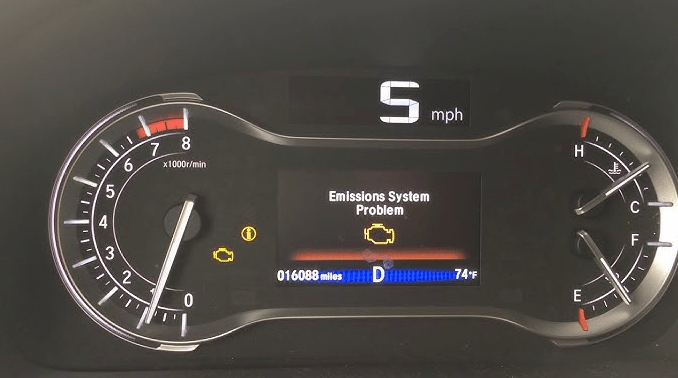Emissions System Problem Honda are essential for limiting the amount of pollutants that are emitted into the atmosphere. Automobile manufacturers have created cutting-edge emissions systems to cut hazardous emissions in response to tighter environmental restrictions. On the other hand, a number of Honda owners have mentioned seeing the “Emissions System Problem” alert on their dashboards. This problem can be quite annoying and perplexing, particularly if the source is not immediately apparent. We will examine the origins, signs, and potential fixes of the emissions system issue with Honda cars in this post. We will also talk about the significance of acting quickly to resolve this problem and how to prevent it.
Also Read Article: Pöversätt: Revolutionizing Language Translation 6 Great
Table of Contents
What is the system for emissions?
A car’s Emissions System Problem Honda is made to lessen the amount of toxic gases that the engine emits into the atmosphere. The exhaust gas recirculation (EGR) valve, catalytic converter, oxygen sensors, and evaporative emissions control system (EVAP) are some of its constituent parts. When these components work together, they reduce emissions of hydrocarbons (HC), nitrogen oxides (NOx), and carbon monoxide (CO), helping the car to comply with environmental regulations. The Emissions System Problem Honda from Honda is designed to be dependable and efficient. On the other hand, if it malfunctions or fails, the driver may be notified via a warning light on the dashboard that anything is wrong and needs to be fixed right away.
Common Reasons for Honda Vehicles’ Emissions System Issues
The Honda vehicle’s emissions system issue may be caused by multiple sources. Comprehending these factors can aid in accurately identifying and fixing the problem. These are a few of the most typical reasons:
Corrupt Oxygen Detectors
An engine’s air-fuel mixture must be monitored, and oxygen sensors are essential for this. Inaccurate data sent to the engine’s computer by malfunctioning sensors may result in an inaccurate fuel mixture and higher emissions. One of the most frequent reasons for the Emissions System Problem Honda issue is a broken oxygen sensor.
Problems with Catalytic Converters
Just before they leave the exhaust, toxic gasses must be changed into less toxic pollutants by the catalytic converter. A substantial increase of emissions may result from a malfunctioning or clogged catalytic converter, which would activate the Emissions System Problem Honda alert. Carbon accumulation or exposure to unburned fuel can harm a catalytic converter over time.
Malfunctioning EGR Valve
By recirculating a part of the exhaust gases back into the engine, the exhaust gas recirculation, or EGR, valve helps lower nitrogen oxide emissions. Higher pollution levels and reduced engine performance can result from an EGR valve malfunction or blockage. The Emissions System Problem Honda fault warning may also be triggered by this situation.
Leak in the EVAP System
Fuel vapors are kept from escaping into the atmosphere by the evaporative emissions control (EVAP) system. An Emissions System Problem Honda issue may arise from a leak or other flaw in the EVAP system, such as a broken hose, a loose gas cap, or a malfunctioning canister. Because the EVAP system is so delicate, even little leaks can trigger the emissions system warning or the check engine light to come on.
A filthy or obstructed air filter
An imbalance in the air-fuel combination might result from a dirty air filter limiting airflow to the engine. This might result in incomplete combustion, which would raise emissions and sound the Emissions System Problem Honda fault alert. This problem can be avoided by checking and replacing the air filter on a regular basis.
Errors in software or sensors
Occasionally, a malfunctioning sensor or a bug in the vehicle’s software can be the cause of an emissions system issue. To regulate many facets of engine performance and emissions, modern cars mostly rely on electronic sensors and control modules. Errors in these parts may lead them to falsely suggest an issue with the emissions system.
Signs of a Honda Vehicle Emissions System Issue
You can take action to fix an Emissions System Problem Honda issue in your Honda car before it causes more significant harm by being aware of the signs. Typical signs and symptoms include of:
- Check Engine Light: When the check engine light or a specific emissions system warning illuminates on the dashboard, it is the most clear indication that there is a problem with the emissions system.
- Reduced Fuel Economy: An incorrect air-fuel mixture might cause your Honda’s Emissions System Problem Honda to malfunction, which will result in a decrease in fuel economy.
- Rough Idle or Engine Misfire: When an emissions system isn’t working properly, the engine may misfire or run rough, especially when the car is idling.
- Unusual Exhaust Smell: If you smell a lot of fuel or sulfur coming from the exhaust, something is wrong with the catalytic converter or other emissions parts.
- Inadequate Acceleration: Decreased engine output and slow acceleration may potentially indicate an issue with the emissions system.
Finding and Resolving Honda Vehicle Emissions System Issues
In order to identify and fix an Emissions System Problem Honda issue with your Honda, you must use a methodical approach. The actions to take are as follows:
Look for DTCs, or diagnostic trouble codes.
Obtaining the diagnostic trouble codes from the car’s computer using an OBD-II scanner is the first step in diagnosing the Emissions System Problem Honda issue. You’ll be able to identify the problematic component with greater clarity thanks to these codes.
Examine the catalytic converter and oxygen sensors
Look for wear or damage on the oxygen sensors and catalytic converter. The sensors ought to be changed if they are defective. In a similar vein, the catalytic converter can require cleaning or replacement if it is blocked or broken.
Inspect the EVAP System and EGR Valve
Check for obstructions and make sure the EGR valve is operating properly. Furthermore, look for leaks, loose gas caps, or broken parts on the EVAP system. Fixing or replacing damaged components in these systems can assist in fixing the problem.
Change the Air Filter
To guarantee enough airflow to the engine, replace your filthy or clogged air filter with a fresh one. Emissions can be decreased and the air-fuel mixture improved with a clean air filter.
Upgrade the program or restart the machine
If there is no visible physical damage and the issue continues, a software bug could be to blame. Under such circumstances, the warning may be removed by using an OBD-II scanner to reset the Emissions System Problem Honda or update the vehicle’s software.
Keeping Emissions System Issues at Bay
Maintaining the performance and efficiency of your Honda requires preventing problems with the Emissions System Problem Honda. The following advice will help you maintain the health of your emissions system:
- Frequent Maintenance: Check the oxygen sensors, EGR valve, and catalytic converter, among other emissions system components, on a frequent basis by following your car’s maintenance schedule.
- Employ High-Quality Fuel: Good fuel can assist keep the engine’s carbon buildup under control and shield the catalytic converter and other emissions-related parts from harm.
- Check the Gas Cap: To avoid EVAP system leaks, always make sure the gas cap is securely fastened after refueling.
- Fast Repairs: To avoid minor problems turning into expensive repairs, take prompt action in response to any warning lights or strange symptoms.
Conclusion
There are a number of potential causes of the Emissions System Problem Honda cars, such as malfunctioning oxygen sensors, problems with the catalytic converter, and leaks in the EVAP system. By being aware of the signs and causes of this problem, you may identify it early on and fix it to save your car from suffering more extensive damage. Maintaining the performance of your Honda while lowering your environmental impact through effective emissions system operation requires routine maintenance and prompt repairs.




